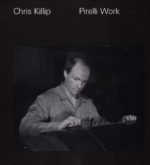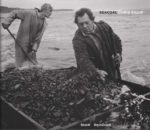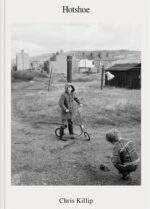Né sur l’île de Man en 1946, il a commencé sa carrière en tant que photographe commercial avant de se tourner vers son propre travail à la fin des années 1960. Son livre, « In Flagrante », une collection de photographies réalisées dans le Nord-Est de l’Angleterre au cours des années 1970 et au début des années 1980, est maintenant reconnu comme une œuvre marquante de la photographie documentaire.
Le village de Skinningrove se trouve sur la côte nord-est de l’Angleterre, caché dans une vallée escarpée, il vire loin de la route principale et fait face à la mer du Nord. Les photographies que Chris Killip a faites de sa communauté ouvrière farouchement indépendante entre 1982 et 1984 sont probablement l’œuvre la plus intime de Killip.
« Comme beaucoup de communautés de pêcheurs soudées, elle pourrait être hostile aux étrangers, surtout à ceux qui ont une caméra. « Now Then » est le mot d’accueil standard dans Skinningrove; un substitut difficile pour le plus habituel, « Hello ». L’endroit avait un bord certain, et il a fallu du temps pour que cet étranger soit toléré. Mon plus grand allié dans l’acceptation a été Leso (Leslie Holliday), le plus extraverti des jeunes pêcheurs. Leso et moi n’avons jamais parlé de ce que je faisais là-bas, mais lorsque quelqu’un mettait en doute ma présence, il intercédait et se portait garant de moi en disant : « Il va bien. » Cette simple approbation était suffisante.
« La dernière fois que je suis allé photographier à Skinningrove, c’était en 1984, et je n’y suis pas retourné depuis trente ans. Quand je l’ai fait, j’ai été choqué par la façon dont cela avait changé, car un seul bateau pêchait encore. Pour moi, le but de Skinningrove était lié à son obsession collective de la mer. Les pêcheurs de Skinningrove croyaient que la mer devant eux était leur territoire privé, le leur seul. Sans l’énergie compétitive que lui procurait la pêche, l’endroit semblait être un pâle reflet de lui-même. » — Chris Killip
« Dans Skinningrove, il a eu l’impression d’être sur le point de saisir le sens du sublime dans les images de vies difficiles sur le littoral. » – Tim Adams, The Guardian
« Les images que Killip a prises des pêcheurs entre 1982 et 1984 ont contribué à sceller sa réputation d’un des plus grands photographes documentaires de Grande-Bretagne. » — The Times
Born in the Isle of Man in 1946, he began his career as a commercial photographer before turning to his own work in the late 1960s. His book, ‘In Flagrante’, a collection of photographs made in the North East of England during the 1970s and early 1980s, is now recognized as a landmark work of documentary photography.
The village of Skinningrove lies on the North-East coast of England, hidden in a steep valley it veers away from the main road and faces out onto the North Sea. The photographs that Chris Killip made of its, fiercely independent hard working-class community, between 1982 and 1984 are possibly Killip’s most intimate work.
“Like a lot of tight-knit fishing communities, it could be hostile to strangers, especially one with a camera. “Now Then” is the standard greeting in Skinningrove; a challenging substitute for the more usual, “Hello.” The place had a definite edge, and it took time for this stranger to be tolerated. My greatest ally in gaining acceptance was Leso (Leslie Holliday), the most outgoing of the younger fishermen. Leso and I never talked about what I was doing there, but when someone questioned my presence, he would intercede and vouch for me with, “He’s OK.” This simple endorsement was enough.
“I last photographed in Skinningrove in 1984, and didn’t return for thirty years. When I did I was shocked by how it had changed, as only one boat was still fishing. For me, Skinningrove’s sense of purpose was bound up in its collective obsession with the sea. Skinningrove fishermen believed that the sea in front of them was their private territory, theirs alone. Without the competitive energy that came from fishing, the place seemed like a pale reflection of its former self.” — Chris Killip
« In Skinningrove, he felt he came close to catching a poet’s sense of the sublime in images of hard lives on the shoreline. » — Tim Adams, The Guardian
« The images Killip took of the fishermen between 1982 and 1984 helped seal his reputation as one of Britain’s greatest documentary photographers. » — The Times



















